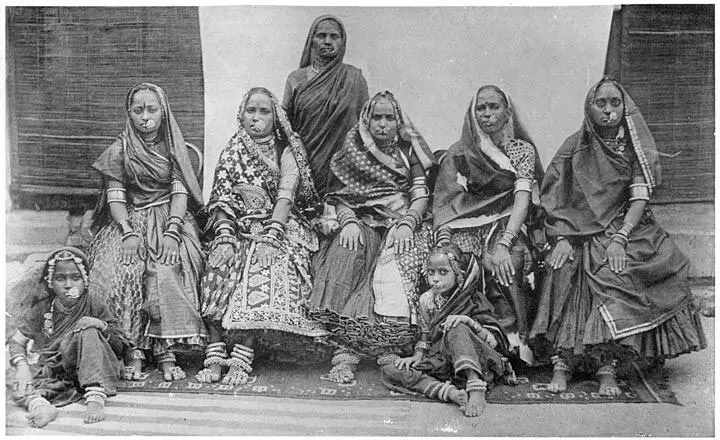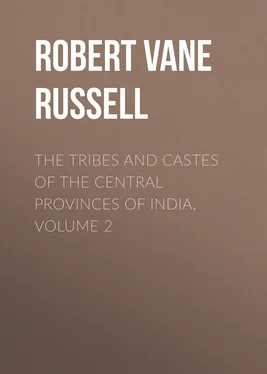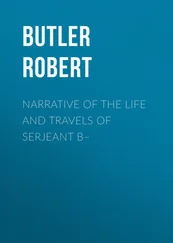Robert Vane Russell - The Tribes and Castes of the Central Provinces of India, Volume 2
Здесь есть возможность читать онлайн «Robert Vane Russell - The Tribes and Castes of the Central Provinces of India, Volume 2» — ознакомительный отрывок электронной книги совершенно бесплатно, а после прочтения отрывка купить полную версию. В некоторых случаях можно слушать аудио, скачать через торрент в формате fb2 и присутствует краткое содержание. Жанр: foreign_prose, История, foreign_edu, foreign_antique, на английском языке. Описание произведения, (предисловие) а так же отзывы посетителей доступны на портале библиотеки ЛибКат.
- Название:The Tribes and Castes of the Central Provinces of India, Volume 2
- Автор:
- Жанр:
- Год:неизвестен
- ISBN:нет данных
- Рейтинг книги:4 / 5. Голосов: 1
-
Избранное:Добавить в избранное
- Отзывы:
-
Ваша оценка:
- 80
- 1
- 2
- 3
- 4
- 5
The Tribes and Castes of the Central Provinces of India, Volume 2: краткое содержание, описание и аннотация
Предлагаем к чтению аннотацию, описание, краткое содержание или предисловие (зависит от того, что написал сам автор книги «The Tribes and Castes of the Central Provinces of India, Volume 2»). Если вы не нашли необходимую информацию о книге — напишите в комментариях, мы постараемся отыскать её.
The Tribes and Castes of the Central Provinces of India, Volume 2 — читать онлайн ознакомительный отрывок
Ниже представлен текст книги, разбитый по страницам. Система сохранения места последней прочитанной страницы, позволяет с удобством читать онлайн бесплатно книгу «The Tribes and Castes of the Central Provinces of India, Volume 2», без необходимости каждый раз заново искать на чём Вы остановились. Поставьте закладку, и сможете в любой момент перейти на страницу, на которой закончили чтение.
Интервал:
Закладка:

Group of Mārwāri Bania women.
2. The Banias a true caste: use of the name.
There has been much difference of opinion as to whether the name Bania should be taken to signify a caste, or whether it is merely an occupational term applied to a number of distinct castes. I venture to think it is necessary and scientifically correct to take it as a caste. In Bengal the word Banian, a corruption of Bania, has probably come to be a general term meaning simply a banker, or person dealing in money. But this does not seem to be the case elsewhere. As a rule the name Bania is used only as a caste name for groups who are considered both by themselves and outsiders to belong to the Bania caste. It may occasionally be applied to members of other castes, as in the case of certain Teli-Banias who have abandoned oil-pressing for shop-keeping, but such instances are very rare; and these Telis would probably now assert that they belonged to the Bania caste. That the Banias are recognised as a distinct caste by the people is shown by the number of uncomplimentary proverbs and sayings about them, which is far larger than in the case of any other caste. 115 115 See para. 19 below.
In all these the name Bania is used and not that of any subdivision, and this indicates that none of the subdivisions are looked upon as distinctive social groups or castes. Moreover, so far as I am aware, the name Bania is applied regularly to all the groups usually classified under the caste, and there is no group which objects to the name or whose members refuse to describe themselves by it. This is by no means always the case with other important castes. The Rāthor Telis of Mandla entirely decline to answer to the name of Teli, though they are classified under that caste. In the case of the important Ahīr or grazier caste, those who sell milk instead of grazing cattle are called Gaoli, but remain members of the Ahīr caste. An Ahīr in Chhattīsgarh would be called Rāwat and in the Maratha Districts Gowāri, but might still be an Ahīr by caste. The Barai caste of betel-vine growers and sellers is in some localities called Tamboli and not Barai; elsewhere it is known only as Pansāri, though the name Pansāri is correctly an occupational term, and, where it is not applied to the Barais, means a grocer or druggist by profession and not a caste. Bania, on the other hand, over the greater part of India is applied only to persons who acknowledge themselves and are generally recognised by Hindu society to be members of the Bania caste, and there is no other name which is generally applied to any considerable section of such persons. Certain of the more important subcastes of Bania, as the Agarwāla, Oswāl and Parwār, are, it is true, frequently known by the subcaste name. But the caste name is as often as not, or even more often, affixed to it. Agarwāla, or Agarwāla Bania, are names equally applied to designate this subcaste, and similarly with the Oswāls and Parwārs; and even so the subcaste name is only applied for greater accuracy and for compliment, since these are the best subcastes; the Bania’s quarter of a town will be called Bania Mahalla, and its residents spoken of as Banias, even though they may be nearly all Agarwāls or Oswāls. Several Rājpūt clans are similarly spoken of by their clan names, as Rāthor, Panwār, and so on, without the addition of the caste name Rājpūt. Brāhman subcastes are usually mentioned by their subcaste name for greater accuracy, though in their case too it is usual to add the caste name. And there are subdivisions of other castes, such as the Jaiswār Chamārs and the Somvansi Mehras, who invariably speak of themselves only by their subcaste name, and discard the caste name altogether, being ashamed of it, but are nevertheless held to belong to their parent castes. Thus in the matter of common usage Bania conforms in all respects to the requirements of a proper caste name.
3. Their distinctive occupation.
The Banias have also a distinct and well-defined traditional occupation, 116 116 See commencement of article.
which is followed by many or most members of practically every subcaste so far as has been observed. This occupation has caused the caste as a body to be credited with special mental and moral characteristics in popular estimation, to a greater extent perhaps than any other caste. None of the subcastes are ashamed of their traditional occupation or try to abandon it. It is true that a few subcastes such as the Kasaundhans and Kasarwānis, sellers of metal vessels, apparently had originally a somewhat different profession, though resembling the traditional one; but they too, if they once only sold vessels, now engage largely in the traditional Bania’s calling, and deal generally in grain and money. The Banias, no doubt because it is both profitable and respectable, adhere more generally to their traditional occupation than almost any great caste, except the cultivators. Mr. Marten’s analysis 117 117 C.P. Census Report (1911), Occupation Chapter, Subsidiary Table I. p. 234.
of the occupations of different castes shows that sixty per cent of the Banias are still engaged in trade; while only nineteen per cent of Brāhmans follow a religious calling; twenty-nine per cent of Ahīrs are graziers, cattle-dealers or milkmen; only nine per cent of Telis are engaged in all branches of industry, including their traditional occupation of oil-pressing; and similarly only twelve per cent of Chamārs work at industrial occupations, including that of curing hides. In respect of occupation therefore the Banias strictly fulfil the definition of a caste.
4. Their distinctive status.
The Banias have also a distinctive social status. They are considered, though perhaps incorrectly, to represent the Vaishyas or third great division of the Aryan twice-born; they rank just below Rājpūts and perhaps above all other castes except Brāhmans; Brāhmans will take food cooked without water from many Banias and drinking-water from all. Nearly all Banias wear the sacred thread; and the Banias are distinguished by the fact that they abstain more rigorously and generally from all kinds of flesh food than any other caste. Their rules as to diet are exceptionally strict, and are equally observed by the great majority of the subdivisions.
5. The endogamous divisions of the Banias.
Thus the Banias apparently fulfil the definition of a caste, as consisting of one or more endogamous groups or subcastes with a distinct name applied to them all and to them only, a distinctive occupation and a distinctive social status; and there seems no reason for not considering them a caste. If on the other hand we examine the subcastes of Bania we find that the majority of them have names derived from places, 118 118 For examples, the subordinate articles on Agarwāl, Oswāl, Maheshri, Khandelwāl, Lād, Agrahari, Ajudhiabāsi, and Srimāli may be consulted. The census lists contain numerous other territorial names.
not indicating any separate origin, occupation or status, but only residence in separate tracts. Such divisions are properly termed subcastes, being endogamous only, and in no other way distinctive. No subcaste can be markedly distinguished from the others in respect of occupation or social status, and none apparently can therefore be classified as a separate caste. There are no doubt substantial differences in status between the highest subcastes of Bania, the Agarwāls, Oswāls and Parwārs, and the lower ones, the Kasaundhan, Kasarwāni, Dosar and others. But this difference is not so great as that which separates different groups included in such important castes as Rājpūt and Bhāt. It is true again that subcastes like the Agarwāls and Oswāls are individually important, but not more so than the Marātha, Khedawāl, Kanaujia and Maithil Brāhmans, or the Sesodia, Rāthor, Panwār and Jādon Rājpūts. The higher subcastes of Bania themselves recognise a common relationship by taking food cooked without water from each other, which is a very rare custom among subcastes. Some of them are even said to have intermarried. If on the other hand it is argued, not that two or three or more of the important subdivisions should be erected into independent castes, but that Bania is not a caste at all, and that every subcaste should be treated as a separate caste, then such purely local groups as Kanaujia, Jaiswār, Gujarāti, Jaunpuri and others, which are found in forty or fifty other castes, would have to become separate castes; and if in this one case why not in all the other castes where they occur? This would result in the impossible position of having forty or fifty castes of the same name, which recognise no connection of any kind with each other, and make any arrangement or classification of castes altogether impracticable. And in 1911 out of 200,000 Banias in the Central Provinces, 43,000 were returned with no subcaste at all, and it would therefore be impossible to classify these under any other name.
Интервал:
Закладка:
Похожие книги на «The Tribes and Castes of the Central Provinces of India, Volume 2»
Представляем Вашему вниманию похожие книги на «The Tribes and Castes of the Central Provinces of India, Volume 2» списком для выбора. Мы отобрали схожую по названию и смыслу литературу в надежде предоставить читателям больше вариантов отыскать новые, интересные, ещё непрочитанные произведения.
Обсуждение, отзывы о книге «The Tribes and Castes of the Central Provinces of India, Volume 2» и просто собственные мнения читателей. Оставьте ваши комментарии, напишите, что Вы думаете о произведении, его смысле или главных героях. Укажите что конкретно понравилось, а что нет, и почему Вы так считаете.












